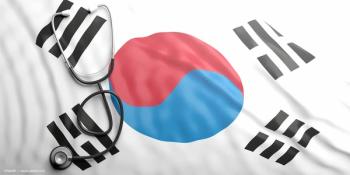
Effect of a pressure-free educational system on myopia in Japan
Myopia is a global epidemic that is driven in part by educational pressures, especially in Asian populations.
Reviewed by Satoshi Ishiko, MD
Studying the prevalence of myopia in children during the COVID‐19 pandemic is important, and conducting a follow‐up study on the same population as they grow also would be informative.
Studying myopia in adults exposed to different educational environments also would shed light on myopia development.
Myopia is a global epidemic that is driven in part by educational pressures, especially in Asian populations.
Researchers in Japan reported that easing the educational requirements among students in a medical school setting resulted in significant regression of the prevalence rate of high myopia compared to the traditional high-pressure educational system in Japan, according to Satoshi Ishiko, MD, from the Department of Medicine and Engineering Combined Research Institute, Asahikawa Medical University, Asahikawa, Hokkaido, Japan.
The educational system in Japan has traditionally been intense for students and is characterized by cramming, rote learning, drilling, and testing, resulting in a high‐pressure educational environment often leading to, for example, school dropout, bullying, and absenteeism.
In recognition of this, a less intense school curriculum was initiated nationally in 2002 for the first 9 years of compulsory education based on a relaxed educational environment. Japan also moved to a 5-day school week and eliminated Saturday classes.
The so‐called “Yutori” educational policy, which began in fiscal year 2012, reduced classroom hours and learning content.
Study of the effect of less educational pressure
Ishiko and colleagues undertook a retrospective observational study to determine the effect of educational pressure on myopia before and after introduction of the Yutori educational system.1
A total of 1025 Japanese medical students at Asahikawa Medical University underwent measurements of the spherical equivalent (SE) and axial length (AL) from April 2011 to February 2020. The birth years of the students ranged from 1961 to 1997.
The initiation of the Yutori educational approach in 2002 corresponded to the student birth year of 1987.
The new system gradually reduced the numbers of classroom hours and learning content over the course of 10 years to 2012.
Ultimately, data from 995 students were analyzed, after students were excluded who had undergone LASIK or who wore orthokeratology lens or were born in a year with too few students to analyze.
The investigators found that the SE and AL were correlated significantly with the birth years (p = 0.004 and p = 0.034, respectively) only during the span of the high-pressure educational system.
The regression rates of the SE and AL during the two educational approaches differed significantly (p = 0.004 and p = 0.037, respectively). The prevalence of high myopia was significant (p < 0.001) only during the high-pressure educational system.
The regression of the prevalence rates of high myopia during the two educational approaches differed significantly (p = 0.010).
In commenting on the correlation between the SE with AL, the investigators reported, “During high‐pressure education, the SE decreased about 0.16 D annually, and the AL increased about 0.05 mm annually, which corresponded to about 3.0 D/mm. Therefore, the refractive change toward myopia was accompanied by AL elongation,” they said.
This was similar to findings reported previously.2,3
In this comparative study of the degree and prevalence of myopia before and after the introduction of free‐pressure education in Japan, the results indicated that the program policy for compulsory education appeared to be associated with myopia progression.
During the compulsory education period, Ishiko commented, children do not have a choice of their educational environment, in that the school curriculum is government-determined.
Because the educational environment can influence myopia progression, the government should appoint an ophthalmologist to the educational system assessment committee.
To control myopia progression of myopia, it is important to inform parents and educators about the harmful effects of prolonged hours of near work and beneficial effects of outdoor activities.
Controlling myopia requires teamwork.
“In order to control the progression of myopia, not only ophthalmologists but also educators and the government should work together,” Ishiko concluded.
---
Satoshi Ishiko, MD
E: [email protected]
The authors had no conflicts of interest related to this subject matter.
--
References
1. Ishiko S, Kagokawa H, Nishikawa N, et al. Impact of the pressure-free Yutori Education Program on myopia in Japan. J Clin Med 2021;10: 4229; https://doi.org/10.3390/jcm10184229
2. Kinge B, Midelfart A, Jacobsen G, Rystad J. Biometric changes in the eyes of Norwegian university students—A three‐year longitudinal study. Acta Ophthalmol Scand 1999;77:648–52, doi:10.1034/j.1600‐0420.1999.770608.x.
3. Lin LL‐K, Shih Y‐F, Lee Y‐C, et al. Changes in ocular refraction and its components among medical students??? A 5‐year longitudinal study. Optom Vis Sci 1996;73:495–8, doi:10.1097/00006324‐199607000‐00007.
Newsletter
Don’t miss out—get Ophthalmology Times updates on the latest clinical advancements and expert interviews, straight to your inbox.


















































.png)


